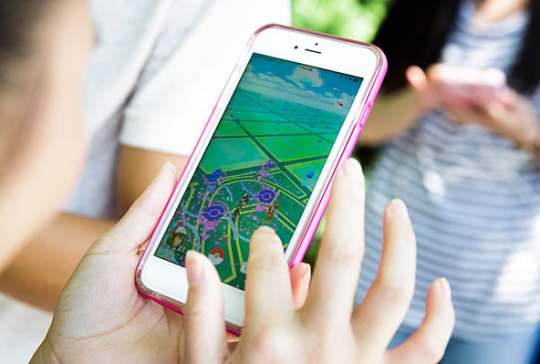
Pokémon Go has taken the world by storm since its release on July 6, engaging mobile users through a combination of nostalgia and gamification. With people of all ages flocking to public places left and right in search of new Pokémon to catch, it’s only a matter of time before retailers attempt to figure out a way to make the app work for their business.
The RTP team discusses how retailers can leverage the Pokémon Go phenomenon to help their business, and shares what these businesses can learn from the app’s popularity, particularly when it comes to augmented reality.
Debbie Hauss, Editor-in-Chief: It’s amazing how quickly Pokémon Go caught on among all age groups. It’s a fantastic opportunity for retailers to grab on to, but I think some glitches need to be fixed first. You don’t want to connect your brand name to a product that causes people to get physically injured, drives inappropriate behavior on hallowed grounds, and lures players into unsafe conditions. But the overall concept is absolutely impressive and is definitely the type of digital, interactive experiences consumers are looking for. I’ll be fascinated to see where the most innovative and disruptive players in retail can take this and run with it (hopefully not into a wall).
Adam Blair, Executive Editor: Among the things we’re learning from the Pokémon Go phenomenon — besides the fact that some people have WAY too much time on their hands — is the value of Augmented Reality (AR). As retail consultant Jim Crawford recently pointed out to me, the smartphone revolution means that just about everyone is carrying around an AR lens in their pockets. His example of a retail application was a person going into a supermarket, holding up a phone and using an AR application to highlight, for example, all the gluten-free products in the cereal aisle. That’s certainly a lot quicker, and a heck of a lot cooler, than having to spend 10 minutes examining product labels. Of course, achieving results like this will require high levels of coordination among retailers, app developers, product manufacturers and store and fixture designers. However, if it also provides retailers with in-the-moment information about what a particular customer is looking for, it seems like the ROI would be worthwhile.
David DeZuzio, Managing Editor: When I saw my first augmented reality demonstration at NRF in January, I was amazed at the potential of the technology. Six months later, the rest of the world is seeing it as well, although not in the same context. Admittedly, you could never get 10- to 30-year-olds to walk around towns looking for a tasteful love seat or coffee table, but the idea is the same. This will open the floodgates for AR and unlock the true mainstream capabilities of the technology. But above all of this, the main lesson for retailers is to increase interaction. If you can engage your customers with something interesting, or even better, gamified, the sky is the limit. Imagine a store full of customers looking for a few AR coupons. The Pokémon Go results speak for themselves, so it will be interesting to see who embraces AR as opposed to those who mistakenly think this is a passing fad.
Klaudia Tirico, Associate Editor: There is nothing more I can say regarding the benefits of Pokémon Go for retailers, as my colleagues have all already made great points on the game’s potential to get more foot traffic to stores by turning businesses into “Pokéstops” and/or “Pokégyms,” or paying for “Lures.” As Adam and David also noted, the potential for augmented reality is huge. But another takeaway from the success of Pokémon Go — one that is not as obvious as others — is the value of nostalgia. Think about it, the Pokémon media franchise was extremely popular in the 90s (an era that is undoubtedly making a comeback because of Millennials), so it’s only natural for Millennials to gravitate to the game because of the nostalgia it provides. So even if retailers don’t have the means to implement augmented reality into their business strategies or pay to lure players with Pokémon Go, they can think outside the box and create nostalgic customer experiences inside their brick-and-mortar stores. Whether Pokémon Go is a fad or not, the awesome feeling of nostalgia will always be popular.
Glenn Taylor, Associate Editor: While I think the Pokémon Go craze itself will likely taper off once the nostalgia around the game wanes and another trend takes its place, retailers definitely have the opportunity to cash in long term via the augmented reality (AR) technology the app is built on. The concept of AR has been used in small degrees within retail, particularly when it comes to fitting apparel and footwear. But Pokémon Go appears to be the first time an outside AR platform actually has made a big enough splash for retailers to actually consider their own AR strategies. It wouldn’t surprise me to see retailers partner up with mobile gaming developers in the future to try and capture the magic of AR, for example to make the finding of a rare deal a fun experience. While mobile games are unlikely to ever garner the universal response that a fun brand like Pokémon would provide, they honestly wouldn’t need to. I’ve seen enough of those random mobile game ads on TV to know that the consumer base for the tech is plentiful; it’s all about offering small deals that matter — such as a small coffee.






